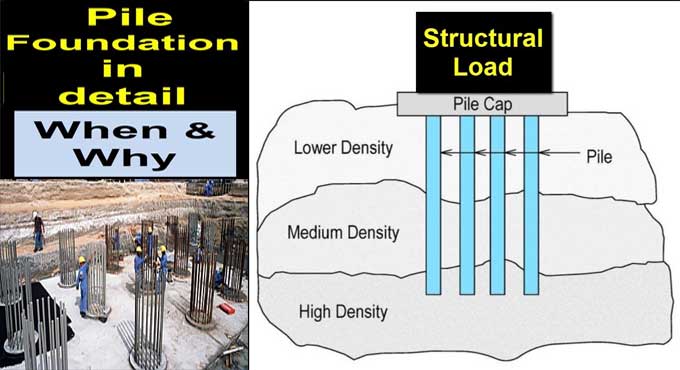NEWS | SOFTWARE | SHEET
Pile Foundations: when, where, and how to install them
There are several aspects that will be considered when choosing a pile foundation: The soil conditions, the load loading on the foundation, the soil layers on the bottom, the site conditions, and the operational conditions. The soil will not be able to bear the weight of a structure if its bearing capacity is insufficient.
After assessing your pile installation needs, you can decide whether displacement or replacement is best for your project. Installing displacement pilings involves driving piles into the ground without removing any soil or other material first.
Generally, pile foundations consist of pile caps and piles arranged individually or in groups. Piles transfer the loads from the superstructure to the rocks, soil, and hard strata below. A pile can be a long, slender member whose length can exceed 15 meters. Because pile foundations serve a variety of purposes, they are commonly used in construction.
Functions of Pile Foundation
- It helps to reduce settlement by using a pile foundation.
- Pile foundations have the primary function of transmitting loads to the ground safely. Loads are transmitted vertically, horizontally, or inclined.
- By utilizing displacement and vibration techniques, pile foundations can be constructed in cohesion-less soil.
- A Pile foundation helps in reducing settlement.
- Having a pile foundation increases the safety factor of structures or buildings that carry heavy loads.
- Pile foundations provide safety, security, and reliability to vertical structures above.
- Load distribution is uniform in pile foundations due to the arrangement of piles and pile caps.
Pile Installation Method
When installing replacement pilings, a hole is dug first and then the pile is inserted. A pile load test design must include decisions on the type of instrumentation.
The designer must select instrumentation that measures the required data with sufficient accuracy. Under service load conditions, permanent instrumentation collects data regarding the pile's stress and behavior. In addition to providing information about pile foundation behavior, permanent instrumentation can also inform about design assumptions and analysis in general.
Proper Position & Timing of Pile Foundation Use
- When the structures are large and heavy and the soil underlying them is weak, pile foundations are needed.
- A pile foundation is a better choice in areas with soil liquefaction or low water tables.
- The sub soil water table at the site may be so high that other foundations will not be usable. It is possible to penetrate through the water and extend pile foundations until a hard stratum is reached in such a situation.
- A structure's foundation may be affected by horizontal forces. Using pile foundations helps to resist this bending action as well as support vertical loads. Therefore, pile foundations are necessary for building structures that are subject to lateral earthquakes and winds.
- Uplift forces created by water table rise or other causes must be resisted by the pile foundation. Off-shore platforms and transmission towers are more likely to experience uplift forces.
- There will be a need for pile foundations for these structures.
- A pile foundation is needed when there is a chance of soil erosion around the structure.
- The shallow foundations may not be able to resist this.
To get more details, watch the following video tutorial.
Lecturer: innotutorial
- The load distribution will also be irregular when the structure's plan isn't regular. If a shallow foundation is used in these situations, a differential settlement will occur. A pile foundation is necessary in such cases to eliminate differential settlement.
- Near deep drainage lines and canals, a pile foundation is necessary.
- Using a sheet pile foundation, you can confine the adjacent soil.
Several factors influence what type of pile you’ll need and the way your piles can be installed, including the depth and materials of your excavation, the angle at which your piles are driven, and the environment that may impact residents or wildlife.
It is possible to categorize foundations into shallow or deep foundations. A shallow foundation is typically used when the structure's loads are small in comparison to the soil's bearing capacity. Where surface soils are not able to support loads imposed deeper layers with higher bearing capacities are used as foundations.


